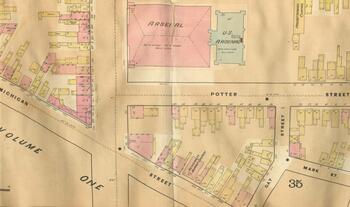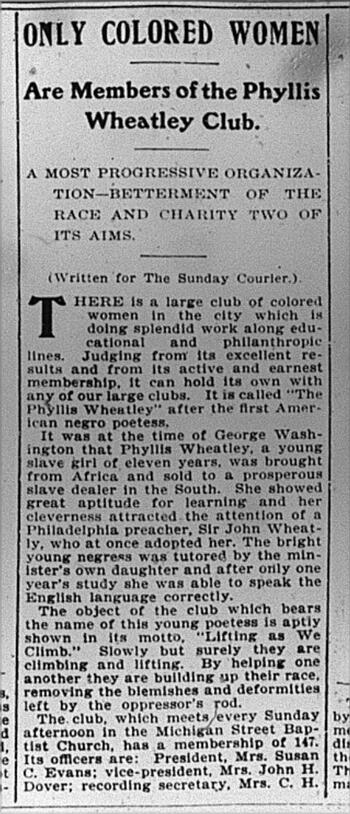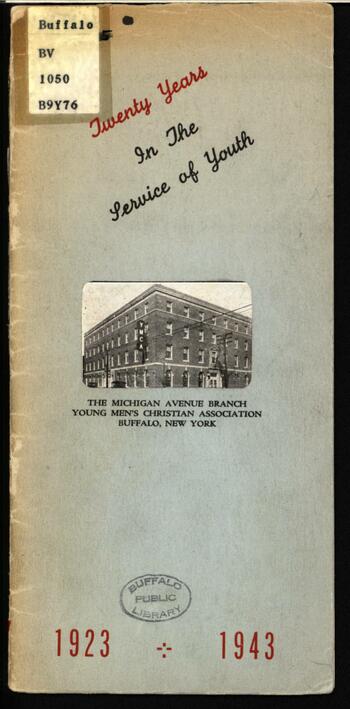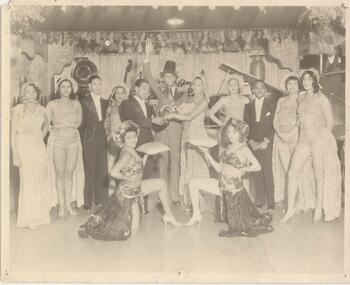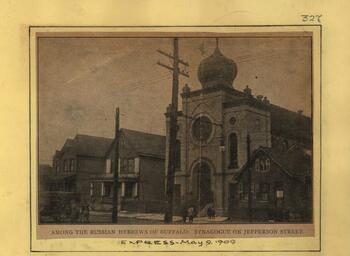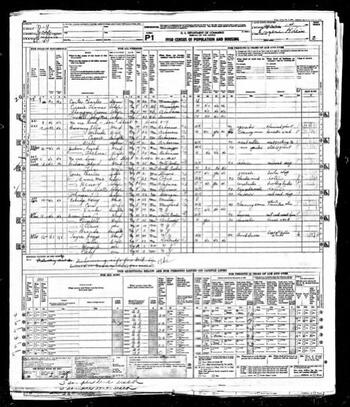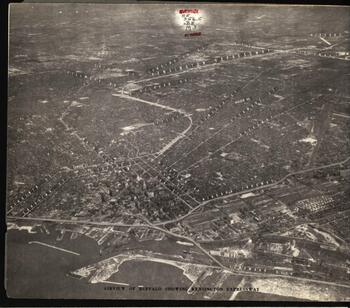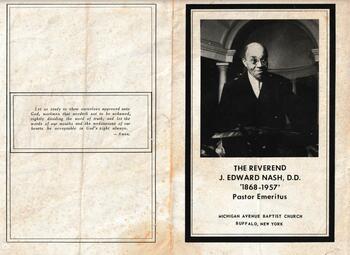Black residents have long settled the area around Michigan and William streets. A small but stable community of African-American people were present throughout Buffalo’s early development, many thought to have escaped enslavement from the South, who decided to remain in Buffalo despite the area’s close proximity to the Canadian Border and greater freedom. Since 1838, Black Buffalonians have asked, “..where can be found, under heaven, a class of men that have been thus treated, that have been more subservient to the laws, made a more rapid progress… than we the colored citizens of Buffalo[i]?”
Persevering through the gradual end of slavery in New York State in 1827, and navigating the perils of the Fugitive Slave Act passed in the 1850, the Black community in Buffalo built churches and schools around Michigan Street well before the U.S. Civil War. The community was politically active, forming committees and clubs to express their views, especially concerning ending enslavement and fighting for equality at home.
Much of this activism came out of local church leadership, including the Bethel AME Church established in 1831 and the Michigan Street Baptist Church. Though few buildings from that time-period still exist today, currently the Michigan Street Baptist Church, dedicated in 1849, stands as a reminder of the Black community and its early place in Buffalo’s history.
After the Civil War and emancipation, more African-Americans moved to the area. One such person was Mary Talbert, who arrived from Ohio around 1891 after marrying. She proved to be a dynamic addition to the community as a part of the Michigan Street Baptist Church, as a founding member of the Phyllis Wheatley Club of Buffalo, and as an integral part of the Niagara Movement which eventually led to the development of the NAACP. Mrs. Talbert is also acknowledged for her work during the Pan American Exposition in 1901, advocating for an exhibit featuring the contributions of Black Americans to the nation.
After the end of the first World War Black Americans were widely on the move, leaving the South in large numbers and heading North in hopes of a better life. In Buffalo, it was a time of growth for Black institutions as well. The first black labor Union in Buffalo, the Musicians Local 533 formed in 1917. Black churches flourished, and community organizations such as the YMCA on Michigan Avenue and the Buffalo chapter of the Urban League formed throughout the 1920’s.
Popular nightclubs and restaurants sprang up in the area around this time including Little Harlem and the Montgomery Hotel & Grill, both run Anna Montgomery. “Ann’s place” as Little Harlem was often called, was popular with audiences from around the city as it brought local and national acts to the stage in its heyday from the 1930’s to the 1960’s.
It is important to note that other groups populated Michigan Avenue and the East side alongside of the black community. Chinese immigrants opened businesses on Michigan Avenue and the Jewish Community opened synagogues and businesses in the neighborhood from the 1880’s through the early 20th century.
By the time the U.S. entered the Second World War, industry was booming in Buffalo, bringing ever-larger numbers of people to the area, until the population peaked around 1950. A new wave of Black families migrated to the city, the vast majority settling on the East Side, including the Fruit Belt, once home to German immigrants. This was certainly due to Redlining, a discriminatory banking practice that made mortgages for low income and minority groups extremely difficult to obtain, and block busting, a real estate practice that accelerated white flight from certain neighborhoods to the suburbs, leaving the city largely segregated. The building of the Kensington Expressway from the 1950s through the 1970s disrupted one of the area’s most vibrant black neighborhoods and further limited housing mobility. Despite these and other setbacks, generations of African-American families have carved out a community with a church on almost every corner and a sense of continuity in the face of disruptive government policies and business practices.
Currently Buffalo’s East Side neighborhood has become a locus of redevelopment, especially after the University at Buffalo established the Buffalo Medical Corridor. The University relocated its medical school to the border of the East Side and local hospitals followed suit. Keeping in mind the deep roots of community and its history of disenfranchisement, housing equity and redevelopment for all is on the minds of long-standing residents and business owners alike, with a focus to preserve the historical relevance of the area while improving the neighborhood after decades of disinvestment. Designated by New York State as a heritage district in 2007, the Michigan Street African American Heritage corridor insures the area’s history is preserved and celebrated for generations to come.
Cultural organizations located on the East Side maintain the legacy of the African-American Community, including the African American Cultural Center and the Colored Musican’s Club of Buffalo, which was formed a year after the Musicians 533 Union was established in 1917.
Since the horrific Tops Market Shooting of May 14th, 2022, economic and other community disparities on the East Side have become the center of local and national debate. As the entire city grapples with the aftermath of this tragedy, it is more important than ever to look to the past to recall the resiliency of Buffalo’s East Side community.
[i] Buffalo, Jan. 4th, 1838. "AN APPEAL TO THE CITIZENS OF BUFFALO." Colored American, 27 Jan. 1838, p. [9]. Slavery and Anti-Slavery: A Transnational Archive, link.gale.com/apps/doc/GB2500079609/SAS?u=nypl&sid=bookmark-SAS&xid=b77b71a4. Accessed 8 Aug. 2022.
Buffalo Morning Express article dated October 8, 1850 describing a meeting of black residents of Buffalo who gathered to publish a resolution condeming the Fugitive Slave Act passed by Congress on September 18, 1850.
Sanborn Map corrected to 1888 showing the Michigan Street Baptist Church.
Buffalo Courier Express Article dated March 3, 1901 describing the work of the recently formed Phyllis Wheatley Club, a benevolent society organized by prominent black women of the time.
Brochure cover, featuring an image from the "American Negro Exhibit" at the 1900 Paris World Exhibition organized by W.E.B. Dubois. This brochure is believed to be from a 1901 Pan-American Exposition exhibit which featured the achievments of Black Americans. Mary Talbert is believed one of the main proponents and organizers of the exhibit.
Brochure describing the work of the Michigan Avenue YMCA, opened in 1927, in celebration of its 20th anniversary.
Scene from the Little Harlem Nightclub featuring Lil Armstrong and Little Harlem Musicians and Dancers.
Scrapbook image of a Synagogue that once stood on Jefferson Street/Jefferson Avenue identified as the Congregation Ahavas Sholem.
1950 Census records showing Watson Street on the East Side. Many East Buffalo residents at that time were born in the South and came North to Buffalo during the Great Migration.
These images from the Kensington Expressway Proposal documents how the subsequently built highway cut through large swathes of residential neighborhoods, mostly on the East Side of Buffalo, where the Black community had developed throughout the 20th century.
The Pastor of the Michigan Avenue Baptist Church for 61 years, Dr. J Edward Nash was an influential leader in Buffalo during the first half of the 20th Century.

